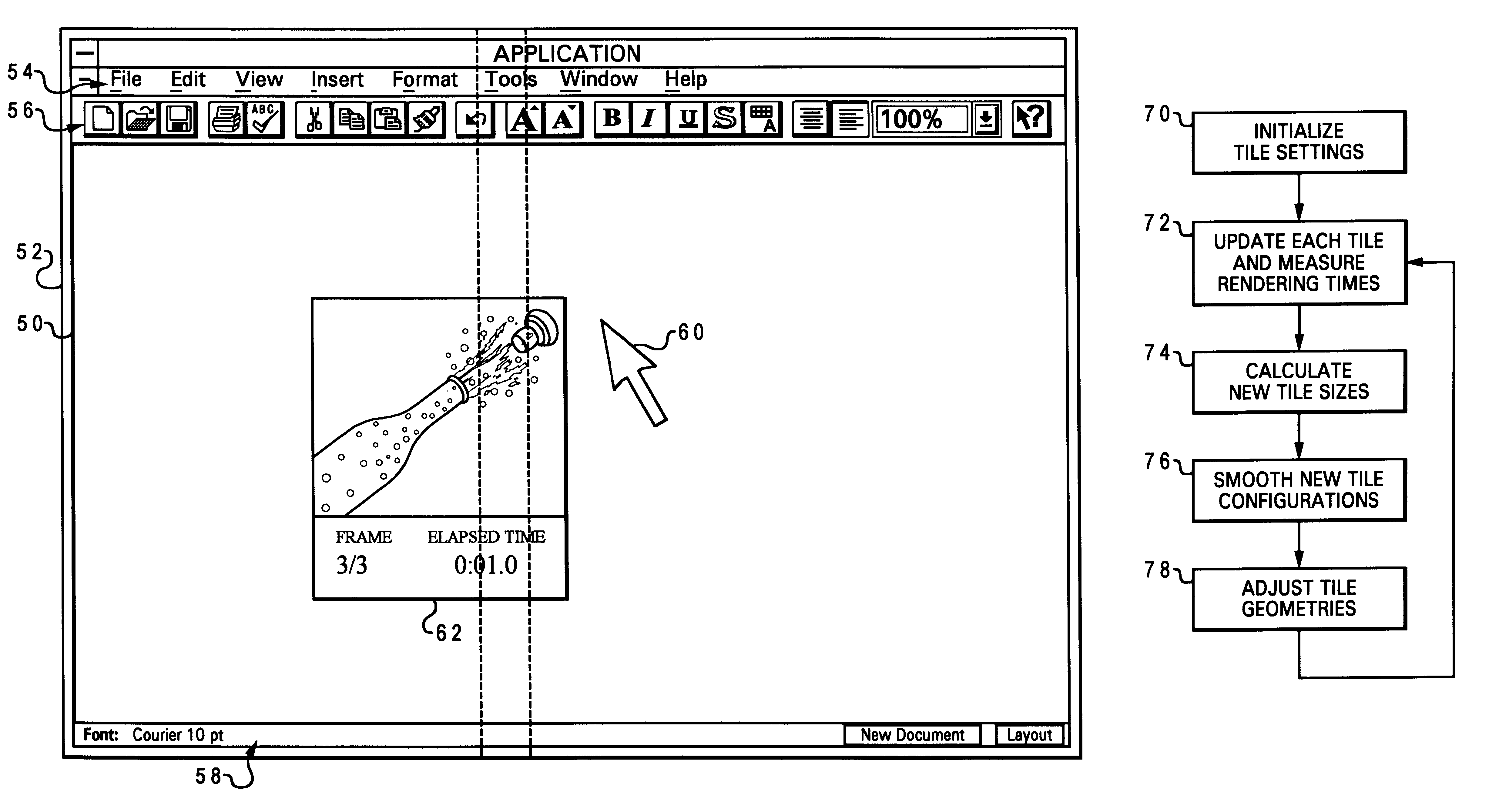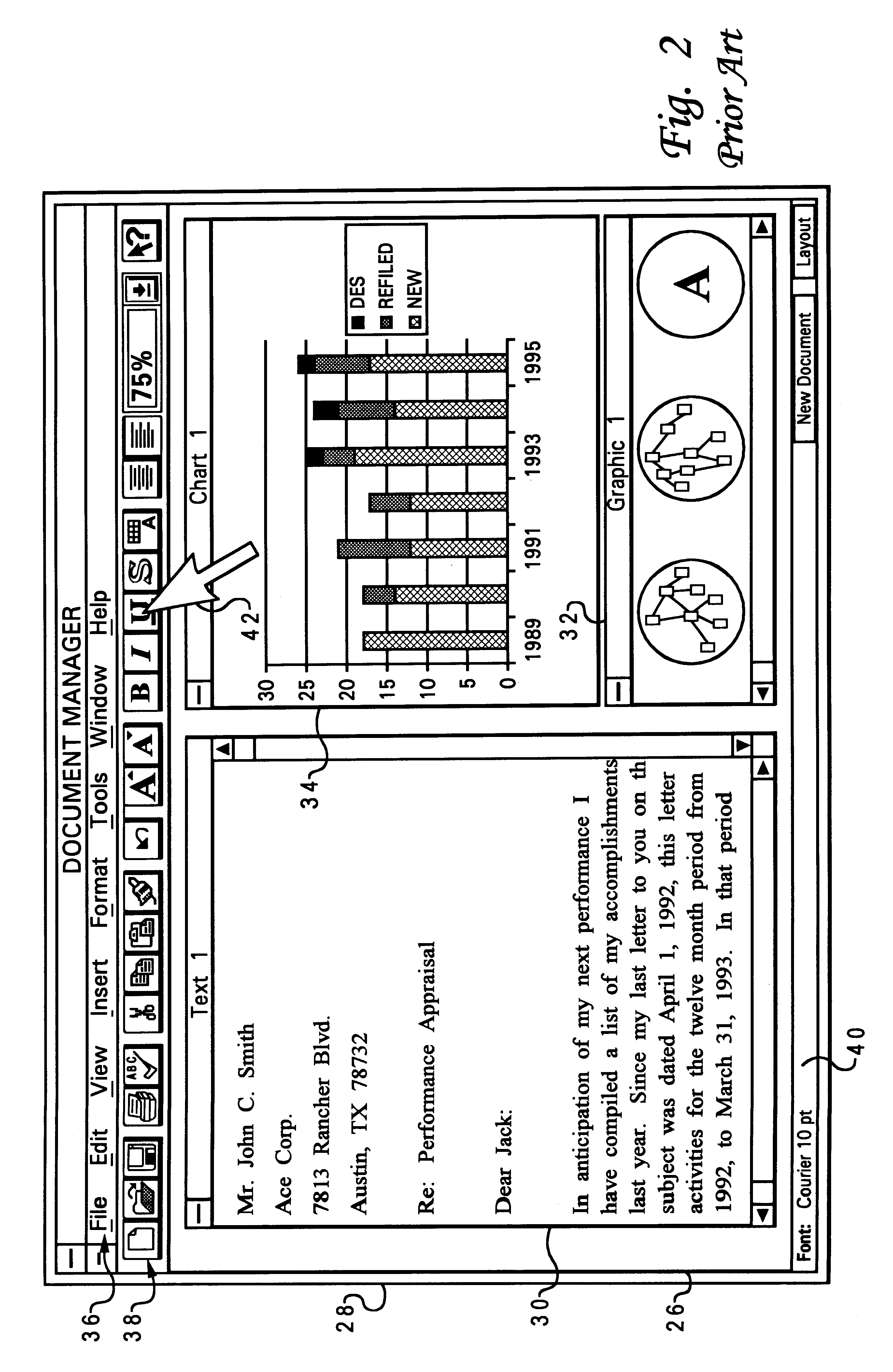Dynamic balancing of graphics workloads using a tiling strategy
a graphics workload and dynamic balancing technology, applied in the field of computer systems, can solve problems such as inability to optimize, restrict the abilities of the computer system, and difficult to divide up the workload to be performed in an efficient manner
- Summary
- Abstract
- Description
- Claims
- Application Information
AI Technical Summary
Problems solved by technology
Method used
Image
Examples
Embodiment Construction
The present invention is directed to a data processing system which speeds up generation of graphic images by utilizing multiple concurrent rendering processes to refresh a video display. The invention is particularly advantageous when performing animation on a computer display. The computer system's hardware may include the various components shown in FIG. 1, but the computer system is not necessarily conventional, i.e., it could include new hardware components as well, or have a novel interconnection architecture for existing components. Therefore, while the present invention may be understood with reference to FIG. 1, this reference should not be construed in a limiting sense. The method of the present invention may further be adapted for use with existing operating systems such as OS / 2 (a trademark of International Business Machines Corp.) or Windows 98 (a trademark of Microsoft Corp.).
With reference now to FIGS. 3A-3C, the present invention introduces the concept of dynamically...
PUM
 Login to View More
Login to View More Abstract
Description
Claims
Application Information
 Login to View More
Login to View More - R&D
- Intellectual Property
- Life Sciences
- Materials
- Tech Scout
- Unparalleled Data Quality
- Higher Quality Content
- 60% Fewer Hallucinations
Browse by: Latest US Patents, China's latest patents, Technical Efficacy Thesaurus, Application Domain, Technology Topic, Popular Technical Reports.
© 2025 PatSnap. All rights reserved.Legal|Privacy policy|Modern Slavery Act Transparency Statement|Sitemap|About US| Contact US: help@patsnap.com



